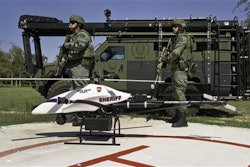Since 1994, Connecticut Spring & Stamping (CSS) had been using a variety of lean manufacturing techniques to reduce internal waste and costs. The company really expanded its lean manufacturing initiative in 2010, when it opted to use the concept of self-directed work teams (SDWTs) to achieve 100 percent on-time delivery of product to its customers with 100 percent quality.
A SDWT is defined as a group of employees who combine different skills and talents to work, essentially without managerial supervision, toward a common purpose or goal. Management’s job is to set the initial objectives, give the SDWT the necessary authority to do whatever it takes to improve the process, provide resources requested to accomplish objectives — and then step aside.
Pilot Self-Directed Work Team Takes Off
Leading the charge was Gaston Pelletier, VP of Continuous Improvement, who used a well-known SWDT “Bible” to guide his efforts.[1]Gaston began by selecting the 11-member automatic loop and torsion team as the pilot SWDT. The auto loop team, which makes extension springs and complicated wire forms, is one of the more self-contained of the work groups, making it easier to effect change by its own efforts.
Gaston served as a coach, initially guiding the team but ceding more and more latitude as the pilot team took on more responsibility and ownership. Brainstorming about how to make improvements, shop floor workers noted that there was not an effective feedback mechanism between the shop and the front office about actual shop floor realities. This resulted in slower and less efficient job performance.
The team’s first decision was to radically alter the way the actual work flow. Timing of work among teams was synchronized with the master schedule and electronic systems and a master schedule job tracker/work flow board system was developed to help clearly visualize each job scheduled for the next 6 months. The scheduling personnel are alerted immediately when there are any conflicts or issues and there is a process to continually provide feedback and changes to the master scheduler. The electronic scheduling system was updated with the changes for all future work, which helped minimize future schedule juggling.
Figure 1 shows the job tracker/work flow board, which has been revised frequently as team members add new information to improve performance. The board has been a huge success – previously of every 100 jobs had to be juggled; now minor changes are made to about 10 of 100 jobs.
Hundreds of other process and quality improvements have been implemented, including bringing some machines physically closer together, printing the job start date more visibly on work orders, moving break areas closer to machines, establishing a permanent cell for quick die jobs, giving the team leader control of overtime, tracking the time parts should stay in the department, and discussing ways to get material to the shop floor faster. The team also made changes so they could more promptly catch internal rejections in the department rather than further down the manufacturing cycle.
The process led to an understanding that any waiting time between part processing steps slows down the whole production and reduces on-time delivery rates. Achieving as close as possible to “one-piece flow” is seen as the desired end.
A key element of the auto loop SDWT is a reward system for meeting objectives. CSS established a three-stage program to make the rewards achievable, yet challenging. The team came up with its goals and time frames to achieve them. The first stage was to get a pizza lunch after achieving 95 % on-time delivery for one week per month. After reaching this goal three times, the team must achieve a monthly 95 % average to get the reward. In the second stage, if the team achieves an average of 90 % on-time delivery for eight straight weeks, each member receives a monetary gift card. After achieving the second stage goal three times, the team moves to the third stage goal, achieving an average of 95 % for eight straight weeks.
At the outset, the auto loop team had a very low on-time delivery performance and it took about six months for improvements to kick in. On-time delivery performance increased significantly by the six month mark, and currently stands at about 96 %. In addition, the quality control operator is now authorized to conduct the first piece inspection. To improve on-time delivery even more, the team hopes to eventually package and ship its product directly from the shop floor.
One tool for achieving the success is measurement and posting of the overall parts per hour goal versus an individual operator’s efficiency, so workers can see the relationship between lost time and on-time performance. No one is singled out, but there are discussions with the team leader on why an operator’s performance is at the lower end, and to discuss training or tool needs to improve performance.
Expanding SDWTs Across the Facility
The auto loop pilot team is now training and giving guidance to 20 other SWDTs. Team leaders meets weekly to share ideas on SDWT progress. No management employees are in the room except Gaston, who only reports what the teams’ problems are, so management can focus on providing any resources needed so the teams can achieve their goals.
None of the other SDWTs are quite as far along as the auto loop team, but several are picking up speed, particularly the secondary power press team, which is focusing on one piece flow of multiple operations. Each SDWT team begins by developing a complete understanding of the master schedule, then synchronizing work details with the electronic system. This process has also yielded a much closer bond, understanding, and alliance with the office personnel.
Gaston concludes, “Any organization can benefit from the SDWT approach, but it will only be successful if it gets support and commitment from the highest management levels, to the supporting office functions, to the shop floor. The results are worth it.”
References
[1] Leading Self-Directed Work Teams: A Guide to Developing New Team Leadership Skills, by Kimball Fisher.























